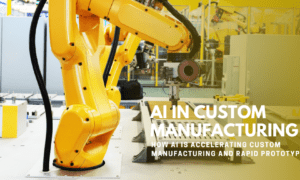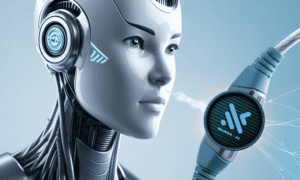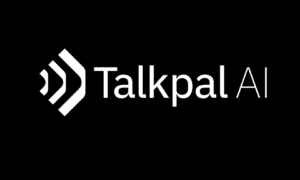Machine learning is a type of artificial intelligence (AI) that allows computers to learn from data without being explicitly programmed. It powers many cool technologies like voice assistants, face recognition, self-driving cars, and more.
To do machine learning, you need a lot of computing power. That’s because the computer has to analyze huge amounts of data to find patterns and build its own rules and intelligence. The more data and the more complex the patterns, the more power is required.
Why GPUs are Essential for Machine Learning
Most regular computers use CPUs (central processing units) for computing. However, CPUs are not the best for machine learning tasks. That’s where GPUs (graphics processing units) come in. GPUs are like super powerful co-processors originally designed to handle complex graphics for gaming and video editing.
What makes GPUs so good for machine learning is their ability to do lots and lots of calculations at the same time in parallel. Regular CPUs are really good at doing step-by-step instructions very fast. But GPUs have thousands of tiny core processors that can all work on different parts of the same calculation simultaneously.
This massively parallel processing makes Nebius cloud GPU server much faster than CPUs at the type of number crunching required to train machine learning models on big datasets. Just how much faster? Somewhere between 10-100 times faster! That’s a huge difference.
Why You Need GPUs for Machine Learning
So, if you want to do any kind of serious machine learning work, a GPU is pretty much required. However, not all GPUs are created equal when it comes to AI performance. More expensive GPUs built for machine learning tend to have a lot more cores and other specialized hardware to accelerate these workloads better.
The amount of GPU power needed depends on the type and size of the machine learning task. For basic projects or testing on a personal computer, even a lower-end GPU in the $100-300 range can help speed things up over just a CPU alone.
GPU Requirements Based on Project Size
But if you are training large neural networks on massive datasets, you’ll likely need one or more high-end GPUs from companies like NVIDIA or AMD. Their top GPUs cost thousands of dollars but offer incredible performance. Many have tens of thousands of cores and other special AI acceleration engines.
NVIDIA GPUs like the A100, V100, and RTX series are extremely popular for machine learning. Their high-end Tesla V100 GPU has over 5,000 cores! AMD GPUs like the Instinct MI250X are powerful options, too.
The Importance of GPU Memory (VRAM)
The amount of GPU memory (VRAM) is also important, especially for very large machine learning models. Having more VRAM allows you to load and process more data directly on the GPU instead of transferring it back and forth.
Entry-level GPUs may have just 4-6GB of VRAM, while high-end ones offer 16, 24, or even 48GB of ultra-fast memory. The more memory, the bigger the models you can train.
Multi-GPU Systems for Extreme AI Compute
For extremely complex machine learning tasks like analyzing medical data or simulating nuclear reactions, you may need multiple high-end GPUs working together. Combining multiple GPUs can provide incredible levels of parallel processing power.
Cloud providers like Google Cloud’s AI Platform and Amazon Web Services now offer GPU instances you can rent on-demand. This allows you to access massive GPU power when needed without the huge upfront costs of buying hardware.
Maximizing Your Available GPU Resources
No matter how much GPU power you have access to, machine learning is all about leveraging that horsepower on your datasets. The bigger and more high-quality your data, the more accurate your trained models will be.
So in summary, for any serious machine learning work you should plan to use one or more Nvidia or AMD GPUs from the start. Entry-level GPUs are fine to get started. But as your datasets and modeling needs grow, you’ll likely need to upgrade to high-end GPUs with tons of cores and VRAM to get the performance required for cutting-edge AI development.
The GPU Landscape for Machine Learning
Let’s take a closer look at some of the top GPU options for machine learning from NVIDIA and AMD:
NVIDIA GPUs for ML:
– A100 – NVIDIA’s latest and greatest with 54 billion transistors, 6,912 CUDA cores, and up to 80GB HBM2e memory. Incredible performance at a premium price.
– V100 – The former flagship Tesla GPU with 5,120 CUDA cores and up to 32GB HBM2 memory. Still very powerful and more affordable than A100.
– RTX GPUs – GeForce RTX gaming cards like RTX 3090, 3080, 3070 offer great AI performance for the cost.
AMD GPUs for ML:
– Instinct MI250X – AMD’s top offering with 58 billion transistors, 7,680 stream processors, and up to 64GB HBM2e memory. On par with NVIDIA’s best.
– Radeon Pro VII – Older prosumer card with 16GB HBM2 memory. Good price/performance for smaller projects.
As you can see, the highest-end machine learning GPUs deliver staggering computational horsepower but come with appropriately high price tags. For most developers and smaller teams, mid-range options like NVIDIA’s RTX cards can provide great value.
The Future of AI Processing
While GPUs have been transformative for modern AI development, dedicated AI accelerators like Google’s TPUs and Apple/AI’s Neural Engine chips could eventually displace them for certain machine learning workloads. These specialized processing units are designed from the ground up specifically to accelerate artificial intelligence.
That said, both NVIDIA and AMD have AI-focused hardware roadmaps for years to come. So, while new accelerator alternatives emerge, expect GPUs to remain the dominant compute platform for training machine learning models in the foreseeable future.
Conclusion
Choosing the right level of GPU power for your machine learning projects is critical. Having enough horsepower can be the difference between training state-of-the-art models and waiting days for prototypes to run. By understanding your compute needs and aligning them with the best GPU hardware, you’ll ensure your AI development stays ahead of the curve.



































